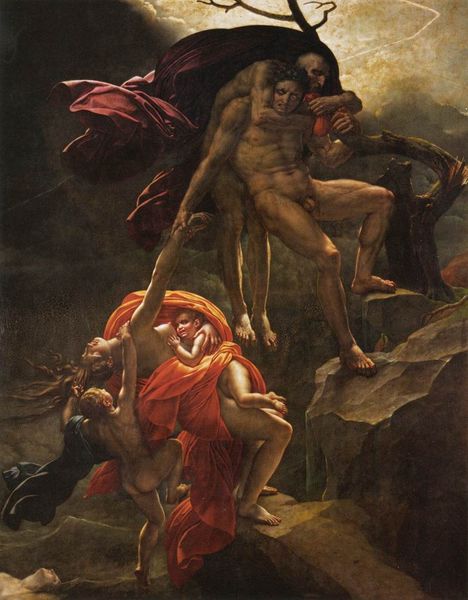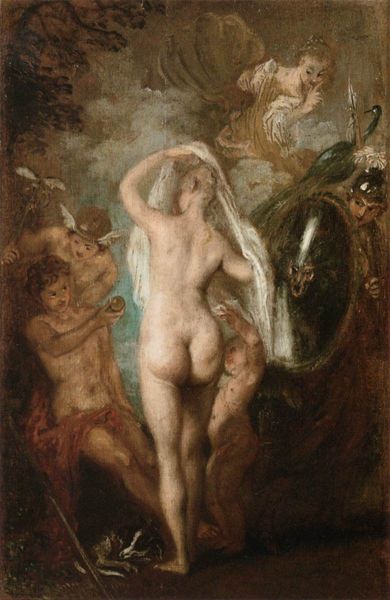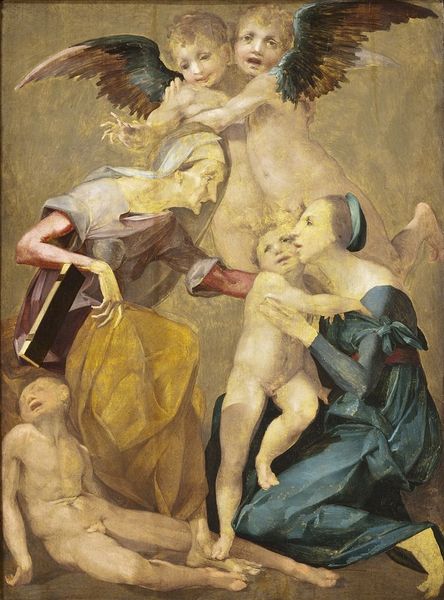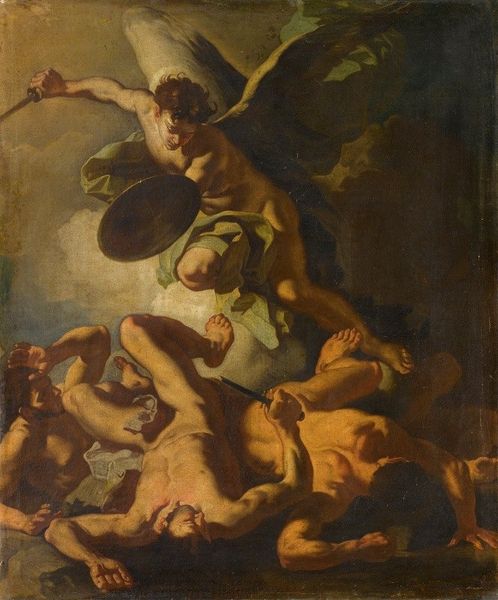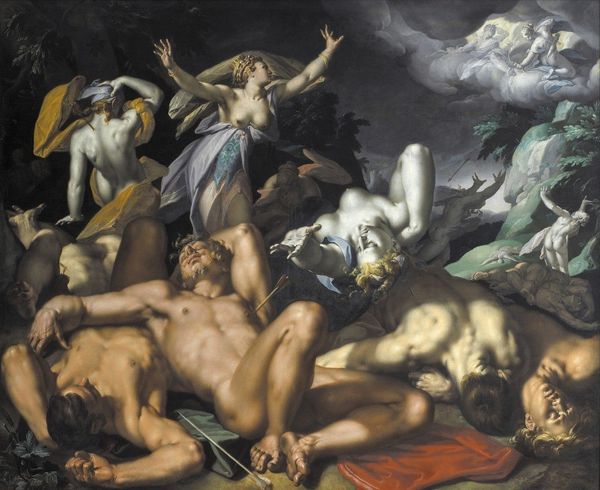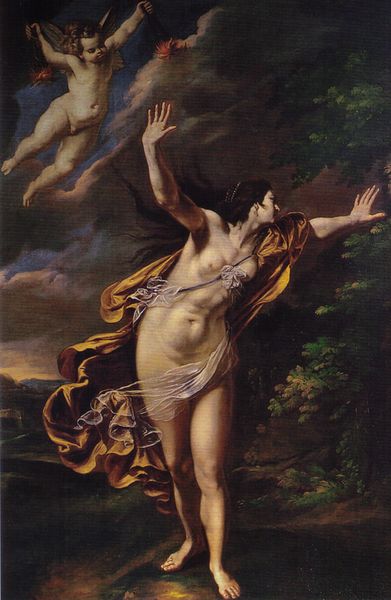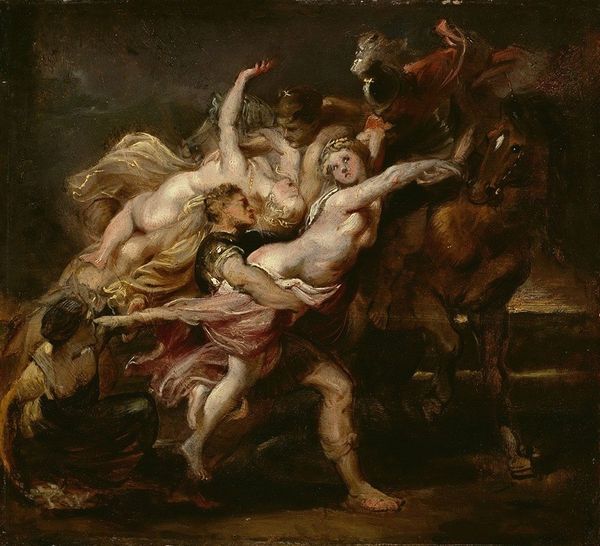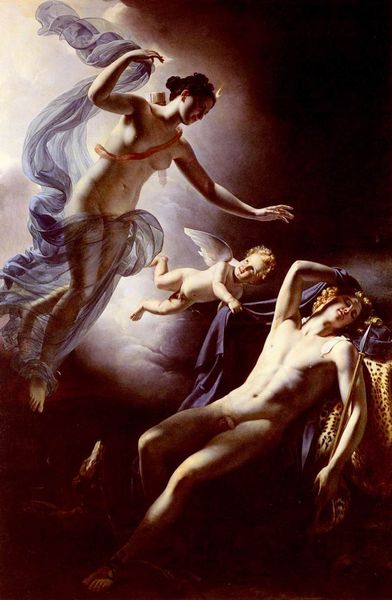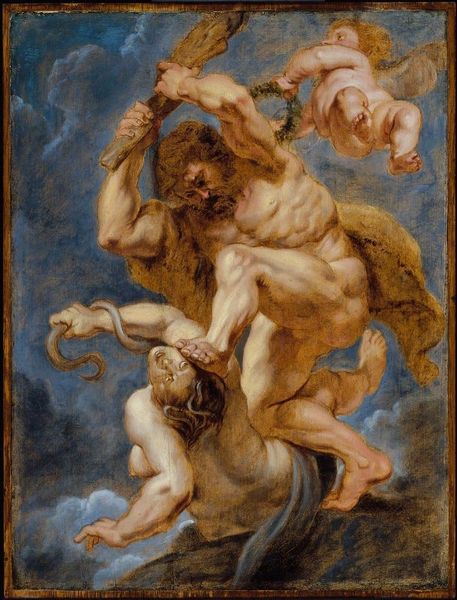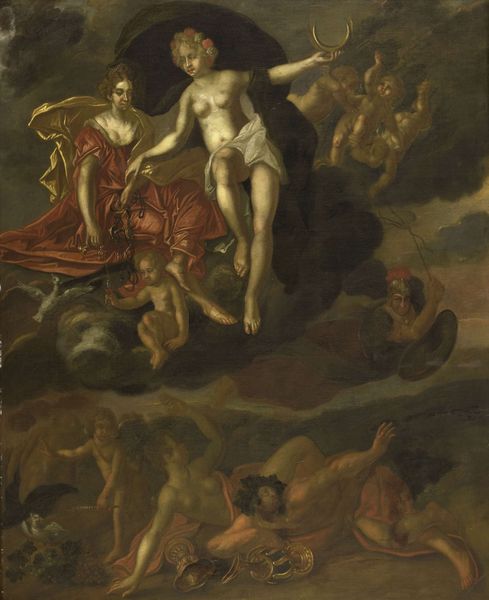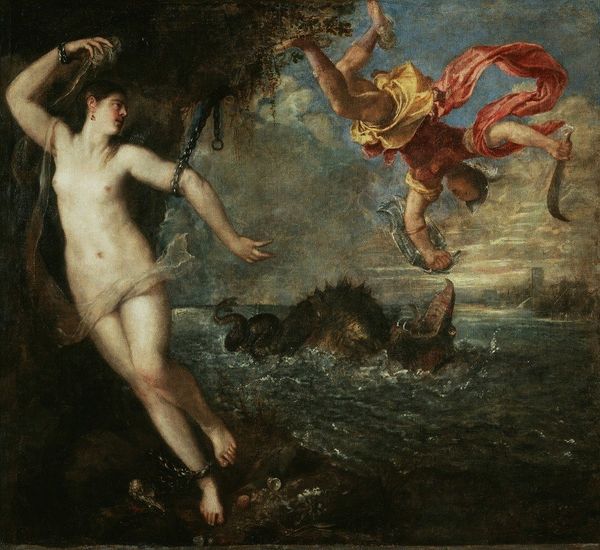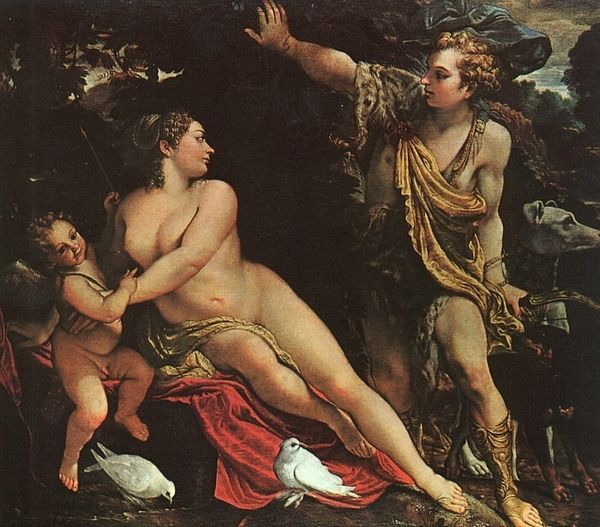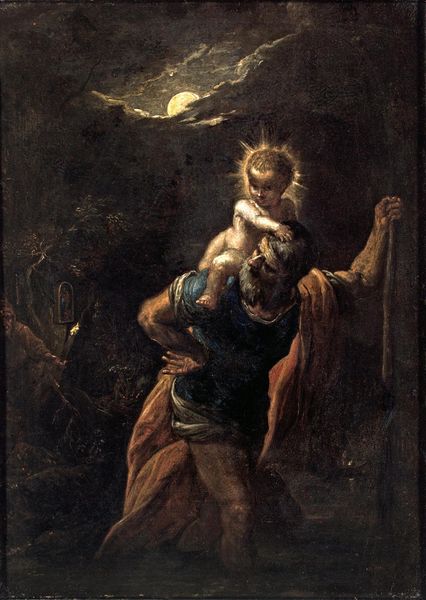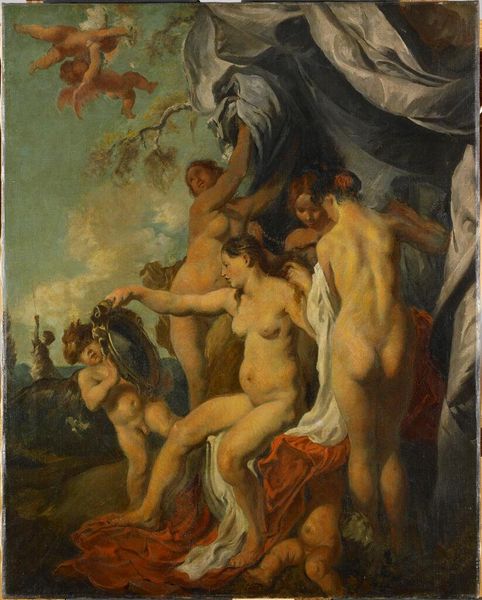
painting, oil-paint
#
allegory
#
painting
#
oil-paint
#
figuration
#
romanticism
#
mythology
#
history-painting
#
expressionist
Copyright: Public Domain: Artvee
Curator: Here we have Francisco Goya’s “Witches’ Flight,” painted in 1798. The medium is oil on canvas. Editor: Yikes. It's immediately unsettling. The palette is so dark, and there's this almost repulsive huddle of bodies levitating at the top. What’s going on here? Curator: This work reflects Goya’s fascination with the irrational and superstitious beliefs prevalent in Spanish society at the time. It also critiques social injustices through satire. Editor: So these levitating figures are the witches? I notice the ones on top wear these bizarre pointed hats, like warped bishop's miters. There's a body down below on the ground, and a figure in a white sheet, seemingly terrified. Curator: Indeed. It’s a symbolic representation of ignorance and fear versus reason and enlightenment. The 'witches' are performing some sort of ritual on the hapless figure below, while the one in white seems to be trying to ward them off. He is covering his head in shame. And that small animal peeking out on the side looks like an ass. Editor: Well, it's profoundly disturbing. I keep coming back to the colour; the darkness feels incredibly heavy. And Goya's brushwork seems so frenzied, almost manic. Did he paint this during one of his darker periods? It feels nightmarish, raw... almost… expressionistic. Curator: This was part of a series of cabinet paintings meant to decorate a Duke's country estate, paintings that depicted regional celebrations, bullfights, and scenes from taverns—subjects Goya would explore with an increasingly critical and skeptical eye, eventually taking his critiques to complete allegorical statements like we have here. Goya was, at this time, undergoing a severe illness that left him deaf; one cannot underestimate the effect of this kind of sensory deprivation in artists’ lives, particularly a romantic one such as Goya’s. Editor: Interesting. So the work reflects a social critique, a personal torment. Seeing it now, I think I am sensing less of that initial repulsion and something a little more profound and layered: more human, less "yikes". Curator: Precisely, Goya presents a layered view of human existence where light and shadow battle constantly. It is not just the painting of horror that endures here; it's Goya's interrogation of Spanish culture that stands tall and proud. Editor: Agreed. It makes me question the stories we tell ourselves about who's in power and who isn't, and about why some folks are easily demonized. And as an artist, well, let’s just say it makes me want to run to the studio and embrace the darkness!
Comments
No comments
Be the first to comment and join the conversation on the ultimate creative platform.
